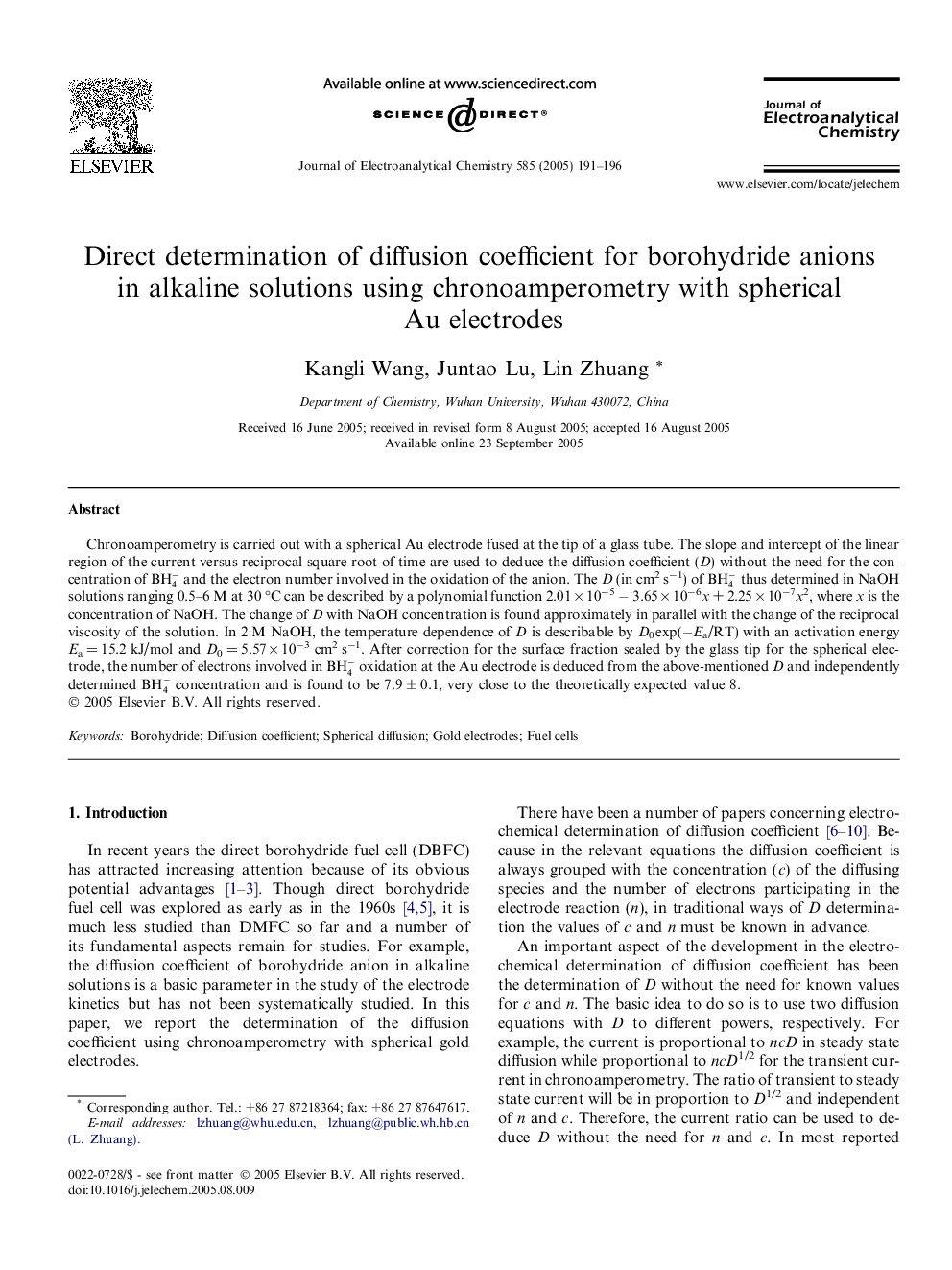| Article ID | Journal | Published Year | Pages | File Type |
|---|---|---|---|---|
| 10275717 | Journal of Electroanalytical Chemistry | 2005 | 6 Pages |
Abstract
Chronoamperometry is carried out with a spherical Au electrode fused at the tip of a glass tube. The slope and intercept of the linear region of the current versus reciprocal square root of time are used to deduce the diffusion coefficient (D) without the need for the concentration of BH4- and the electron number involved in the oxidation of the anion. The D (in cm2 sâ1) of BH4- thus determined in NaOH solutions ranging 0.5-6 M at 30 °C can be described by a polynomial function 2.01 Ã 10â5 â 3.65 Ã 10â6x + 2.25 Ã 10â7x2, where x is the concentration of NaOH. The change of D with NaOH concentration is found approximately in parallel with the change of the reciprocal viscosity of the solution. In 2 M NaOH, the temperature dependence of D is describable by D0 exp(âEa/RT) with an activation energy Ea = 15.2 kJ/mol and D0 = 5.57 Ã 10â3 cm2 sâ1. After correction for the surface fraction sealed by the glass tip for the spherical electrode, the number of electrons involved in BH4- oxidation at the Au electrode is deduced from the above-mentioned D and independently determined BH4- concentration and is found to be 7.9 ± 0.1, very close to the theoretically expected value 8.
Related Topics
Physical Sciences and Engineering
Chemical Engineering
Chemical Engineering (General)
Authors
Kangli Wang, Juntao Lu, Lin Zhuang,
